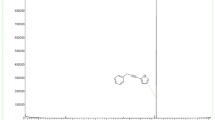Abstract
Laboratory studies with the stink bug Chinavia erythrocnemis (Berg) (Hemiptera: Pentatomidae) were conducted to evaluate the effect of reproductive structures of cultivated plants, on nymph and adult performance, and adult preference. Results indicated that nymphs were able to complete the development on all plants evaluated. Nymph developmental time was significantly shorter on immature soybean pod [Glycine max (L.) Merrill], compared with immature green bean pod (Phaseolus vulgaris L.), immature siliques of canola (Brassica napus L. var. oleifera), and immature ear heads of wheat (Triticum aestivum L.). Nymph survivorship was superior on soybean (60%), decreasing on the remaining food sources (< 38%). Fresh body weight of females and males at adult emergence was higher on green bean and on soybean, compared with wheat and canola. Survivorship of adults after 40 days was highest on soybean (80%) and on green bean (65%), and lowest on canola (25%). Females of C. erythrocnemis reproduced on all food sources tested, except on canola, on which no female laid eggs. The fecundity and longevity of adults were significantly higher on green bean and on soybean compared with wheat and canola. In general, adults gained weight over time when fed on green bean (18%), followed by soybean (3.4%). On wheat and on canola, the bugs lost weight over time (− 14.9% and − 27.4%, respectively). In general, soybean pod was preferred compared with green bean, canola, and wheat; green bean was preferred over wheat and canola; and canola was preferred to wheat.





Similar content being viewed by others
References
Avalos DS, La Porta NC (1996) Biología de Acrosternum bellum Rolston, 1983 (Hemiptera, Pentatomidae). Agriscientia 13:25–30
Bianchi FM, Marsaro AL Jr, Grazia J, Pereira PRVS, Panizzi AR (2019) Diversity of stink bugs (Pentatomidae) associated with canola: looking for potential pests. Neotrop Entomol 48:219–224
Development Core Team R (2016) R: A language and environment for statistical computing. R Foundation for Statistical Computing, Vienna
Edwards J, Hertel K (2011) Canola growth & development. PROCROP Series, NSW Department of Primary Industries, Australia, 90
Faria JC, Jelihovschi EG, Allaman IB (2018) TukeyC: Conventional Tukey test package: R package. Available from: https://cran.r-project.org/web/packages/ /TukeyC (Accessed 08/30/2019)
Fehr WR, Caviness CE, Burmood DT, Pennington JS (1971) Stage of development descriptions for soybeans, Glycine max (L.) Merrill. Crop Sci 11:929–931
Large EC (1954) Growth stages in cereals. Illustration of the Feekes scale. Plant Path 3:128–129
Matesco VC, Schwertner CF, Grazia J (2006) Descrição dos estágios imaturos de Chinavia erythrocnemis (Berg) (Hemiptera, Pentatomidae). Neotrop Entomol 35:483–488
Matesco VC, Schwertner CF, Grazia J (2007) Descrição dos estágios imaturos e biologia de Chinavia pengue (Rolston) (Hemiptera, Pentatomidae). Rev Bras Entomol 51:93–100
Matesco VC, Schwertner CF, Grazia J (2009) Morphology of the immatures and biology of Chinavia longicorialis (Breddin) (Hemiptera: Pentatomidae). Neotrop Entomol 38:74–82
McPherson JE (1982) The Pentatomoidea (Hemiptera) of northeastern North America with emphasis on the fauna of Illinois. Southern Illinois University Press, Illinois, 240
McPherson RM, Zehnder GW, Smith JC (1988) Influence of cultivar, planting date, and row width on abundance of green cloverworms (Lepidoptera: Noctuidae) and green stink bugs (Heteroptera: Pentatomidae) in soybean. J Entomol Sci 23:305–313
Panizzi AR (1997) Wild hosts of pentatomids: ecological significance and role in their pest status on crops. Annu Rev Entomol 42:99–122
Panizzi AR, Grazia J (2015) Introduction to true bugs (Heteroptera) of the neotropics. In: Panizzi AR, Grazia J (eds) True bugs (Heteroptera) of the neotropics. Springer, Dordrecht, pp 3–20
Panizzi AR, Lucini T (2017) Host plant-stink bug (Pentatomidae) relationships. In: Čokl A, Borges M (eds) Stink bugs biorational control based on communication processes. CRC Press, Boca Raton, pp 31–58
Panizzi AR, McPherson JE, James DG, Javahery M, McPherson RM (2000) Stink bugs (Pentatomidae). In: Schaefer CW, Panizzi AR (eds) Heteroptera of economic importance. CRC Press, Boca Raton, pp 421–474
Panizzi AR, Lucini T, Possebom T (2018) Development of Dichelops furcatus (Hemiptera: Heteroptera: Pentatomidae) reared on spring cereals versus soybean. J Insect Sci 18(17):1–7
Rolston LH (1983) A revision of the genus Acrosternum Fieber, subgenus Chinavia Orian in the Western Hemisphere (Hemiptera, Pentatomidae, Pentatomini). J New York Entomol Soc 91:97–176
Schwertner CF, Grazia J (2006) Descrição de seis novas espécies de Chinavia (Hemiptera, Pentatomidae, Pentatominae) da América do Sul. Iheringia 96:237–248
Schwertner CF, Grazia J (2007) O gênero Chinavia Orian (Hemiptera, Pentatomidae, Pentatominae) no Brasil, com chave pictórica para os adultos. Rev Bras Entomol 51:416–435
Smaniotto LF, Panizzi AR (2015) Interactions of selected species of stink bugs (Hemiptera: Heteroptera: Pentatomidae) from leguminous crops with plants in the neotropics. Fla Entomol 98:7–17
Acknowledgments
We thank the Embrapa Trigo, Passo Fundo, RS, for providing facilities.
Funding
This study was partially supported by a National Council of Research and Technology of Brazil (CNPq) grant 302293/2017-5 to ARP, and by a scholarship to MAS (process number 135651/2018-2); Coordination for the Improvement of Personnel in Higher Education (CAPES) by a post doctorate scholarship to TL (process number 40001016005P5).
Author information
Authors and Affiliations
Contributions
TL co-planed, analyzed, and co-wrote the manuscript; ARP co-planed and co-wrote the manuscript; MAS co-planed and conducted lab work; ALMJ co-planned and co-wrote the manuscript.
Corresponding author
Ethics declarations
Research activity was registered at the Sisgen databank under number AA93702 and at the Publication Committee of Embrapa Trigo under number 21205.002249/2019-41.
Additional information
Edited by Rafael M Pitta – Embrapa
Publisher’s Note
Springer Nature remains neutral with regard to jurisdictional claims in published maps and institutional affiliations.
Rights and permissions
About this article
Cite this article
Lucini, T., Panizzi, A.R., Silva, M.A. et al. Performance and Preference of Chinavia erythrocnemis (Berg) (Heteroptera: Pentatomidae) on Reproductive Structures of Cultivated Plants. Neotrop Entomol 49, 163–170 (2020). https://doi.org/10.1007/s13744-019-00740-2
Received:
Accepted:
Published:
Issue Date:
DOI: https://doi.org/10.1007/s13744-019-00740-2




